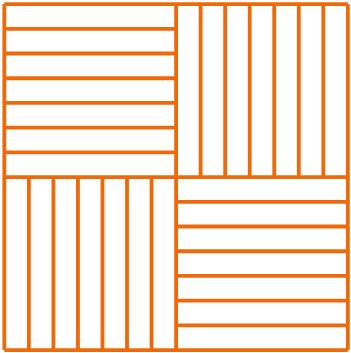Blackface in the Age of Facial Recognition
Sign Up For The Newsletter
〰️
Sign Up For The Newsletter 〰️
Can Gov. Ralph Northam find the person dressed in Black face using facial recognition tech?

At the start of Black History Month, during a press conference, the Governor of Virginia Ralph Northam, with his wife by his side, refuted his previous statements that it was him pictured in a photograph sporting blackface. Attempting to persuade Americans, and more specifically Virginians, away from his previous statements, Northam said that he knows that his denial was hard for people to believe. He said after further reflection and evidence that he was sure that it wasn’t him. This is not to mention, that he admitted to wearing black face to imitate Michael Jackson.
According to The Virginian Pilot, in an effort to absolve himself of a cultural sin, the governor said that he planned “to pursue the identities of the people in the photos using facial recognition software…”
The Intersection reached out to the governor to see if he was still planning to acquit himself by way of facial recognition technology. His office did not respond to emails or phone calls, and at the time of this publication still had not offered a statement on the matter. The governor — while on a small media tour in which he called African slaves brought to Virginia “indentured servants” — has made no public statements to date addressing his previous statement regarding facial recognition and blackface.
The governor has made it clear that he intends to stay in office to help Virginia heal. To further educate himself, it was reported that the governor has read “The Case For Reparations ” by Ta-Nehisi Coates, former national correspondent at The Atlantic Magazine, and other African-American literature.
U.S. Rep., serving Virginia’s 8th District, Don Beyer, while on Face The Nation, a CBS News show, criticized the governor.
“The great confusion last weekend, whether he wasn’t sure he was in the Klan robe or the blackface, has just sacrificed so much of his credibility and his ability to lead,” Beyer said, referring to the photo in Northam’s yearbook. “I respect him, I know he wants to rehabilitate his reputation and even his sense of moral compass, but he sacrificed so much of his ability to govern effectively.”
Some innovators, mathematicians, and those within the criminal justice system have been laying the foundation to create facial recognition for decades. The tragic events of 9/11, according to the Boston Globe, opened the door“for biometrics developers to expand their sales in America, a nation that saw itself as vulnerable precisely because it could not identify its enemy.”
The tech uses machine learning, which has the ability to analyze and interpret pictures of people’s faces. Some technologists and tech companies have aggressively marketed that tech as accurate, able to read anyone’s face. It is possible that the tech appealed to the governor because of how it is able to identify people, though, at this point we are not sure of those reasons.
“There are multiple facial recognition algorithms. However, generally, facial recognition is essentially a machine learning technique that uses programming to identify parts of a face by comparing selected features to a previously populated database,” said Cory Lancaster, Chief Technology Officer at Street Entrepreneurs, a nonprofit organization that offers entrepreneurial development programming to underrepresented founders. “For example, the computer is able to analyze a human face relative to other pictures of human faces. So, after studying mass databases, the computer learns how selected features like a nose, mouth, eye, ear, chin, etc. appear in human form, as opposed to how these features appear on animals, drawings, cartoons, etc. Then, overtime, these algorithms can repeatedly identify multiple pictures of a human face. The same process could be followed to identify a specific face.”
There are many institutions in the United States and abroad that use facial recognition to track and identify people. Some have or will implement the tech as a way to help people open bank accounts. Amazon, Microsoft, Google, and a host of other companies have developed facial recognition technology for commercial use ( See here and here). Though this kind of tech has been implemented widely throughout America and abroad, it’s perhaps the only time that a politician has openly recommended its use to absolve himself from an alleged racist past act.
“We’re living in a time where there is an application for everything, said Lancaster. “Our phones, tablets, and computers are our second brains and third arms. This means that while technology has revolutionized our workflows and day to day existence, it’s also become a superfluous crutch. It’s become a source of validation in a space where normal, logical, contextual analysis should suffice. In this case, accrediting the use of facial recognition software to determine the validity of the black face allegations is an inefficient use of resources if the contextual evidence can provide unambiguous proof that it is the governor in those photos. Furthermore, accrediting the use of facial recognition software in criminal investigations could lead to introducing other technological measures into the criminal justice system, which I highly discourage because of the ways in which technology is generally biased and discriminatory against black and brown communities.”
Activists, lawyers, and technologists have voiced deep concern about the use of facial recognition as a reliable technology. Some are worried, with good evidence to back them, that the algorithms used to help the tech operate are biased. Joy Buolamwini, founder of Algorithmic Justice League and a researcher at MIT Media Lab, gave a TED talk about algorithmic bias. At the talk, to show what she meant by facial recognition bias, Buolamwini showed a video. In that video, two lighter-skinned people appear in front of a webcam that uses facial recognition to read their faces. The facial technology gives the sign that it can identify their faces. However, when Buolamwini, who has a darker skin tone, sits in front of the same webcam, the tech gives no indication that it can read her face. She then puts on a white mask, and the machine reads the all-white mask, revealing the bias of the technology.
Recently, The New York Times reported on algorithmic bias used to create facial recognition tech. The Times cited a MIT study by Buolamwini and Inioluwa Deborah Raji, Research Mentee at Google AI. In short, the research shows that facial recognition tech developed by Face++, IBM, and Microsoft have a color and gender bias.
“My research uncovered large gender and racial bias in AI systems sold by tech giants like IBM, Microsoft, and Amazon,” wrote Joy Buolamwini in a Time Magazine op-ed. “Given the task of guessing the gender of a face, all companies performed substantially better on male faces than female faces. The companies I evaluated had error rates of no more than 1% for lighter-skinned men. For darker-skinned women, the errors soared to 35%. AI systems from leading companies have failed to correctly classify the faces of Oprah Winfrey, Michelle Obama, and Serena Williams. When technology denigrates even these iconic women, it is time to re-examine how these systems are built and who they truly serve.”
If facial recognition technology fails to accurately read the faces of those that are naturally dark- skinned, how will the technology read a white face painted black, which falsely imitates a darker skin tone?
Did Gov. Northam and his administration know about algorithmic bias within the facial recognition technology before suggesting to Virginians that he was going to use the tech to find the culprit? We may never know.
The Intersection reached out to other facial recognition companies and scholars who study machine learning to ask if the tech was able to read a white person’s face covered in black paint or shoe polish (blackface). Some never responded to my email. Other scholars said they weren’t available for comment. However, I did manage to talk to a CEO of a facial recognition company. He refused to be on record, but did say in our phone conversation that his particular version of facial recognition would be able to identify a white person in blackface. When I asked if he was certain about this, he said the percentage of certainty would decrease, but maintained that his company’s facial recognition technology was able to read a white person sporting blackface.
There is more. The tech also has a hard time, according to a past report, of reading painted faces. A couple of years ago, Computer Vision (CV) dazzle — face paints coupled with hair designs — emerged to combat facial recognition tech. The tech camouflage or Anti-face movement, which is not black face, is worn to prevent cameras’ with facial recognition tech from tracking people. In addition to this, people have also started wearing what is called Juggalo makeup, clown-like designs- which are different than CV dazzle — to confuse facial recognition programs. According to those people, via an article written by the Outline, some facial recognition tech has a difficult time identifying there faces also. Facial recognition technology also has problems identifying people who wear glasses with “specially designed spectacle frames.”
With various kinds of face paint, one being racist, it is clear, at least for now, it seems that the use of facial recognition technology is unable to exonerate Gov. Northam from an alleged past racist act.
It’s been weeks now, and the governor has made no statement about if he intends to find the alleged blackface perpetrator via facial recognition.
However, Gov. Northam has set out to do what his office calls “Reconciliation Tour.” His first stop was at the Virginia Union University, an Historical Black College or University, to commemorate the Richmond 34. But, the Virginia Union Student Government Association President uninvited him. Northam proceeded to invite the Richmond 34 to a private event at the Executive Mansion, according to The Richmond Times-Dispatch.
“It was a good time to meet him, hear him, and for him to hear us, hear about our experiences,” said Wendell Foster, 78, one of the Richmond 34. “I think he took it in.”
In early March, it was reported that members of the Virginia Legislative Black Caucus were really concerned about Northam’s attempt at reconciliation.
“Glad they didn’t call me — matter of fact, don’t call me until you have some substance,” said Del. Lamont Bagby, D-Henrico, who is not a member of the group, said on Twitter. Bagby is the chairman of the black caucus, according to the Times Dispatch.
Check Out Other Tech News Below




The fight to provide Maryland citizens with a livable wage continues. On Monday, Oct. 7, members from activist organizations stood alongside Tom Dernoga (District 1), and Krystal Oriadha (District 7) at The Wayne K. Curry building in Upper Marlboro to publicly advocate for a bill that would index the minimum wage in Prince George’s County.